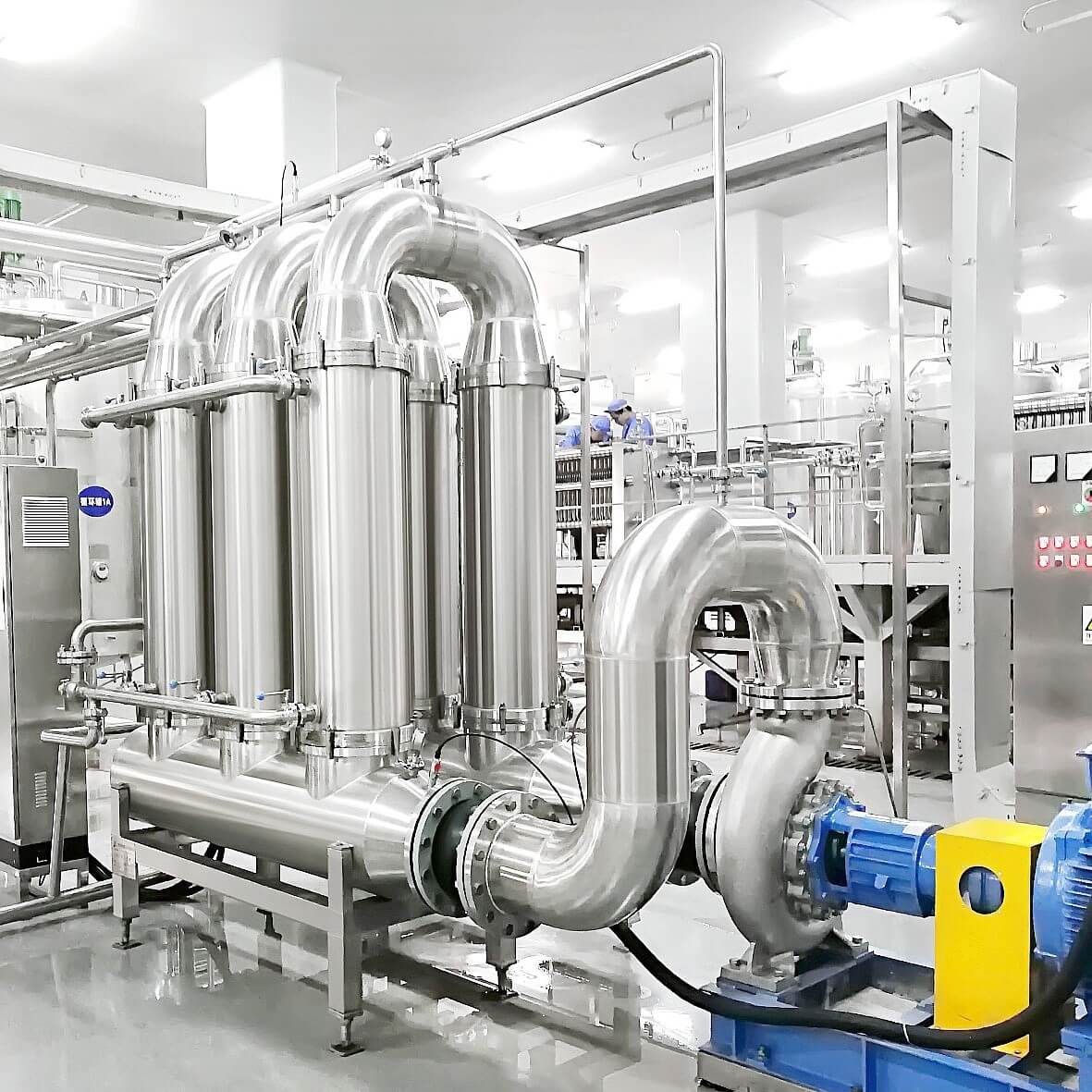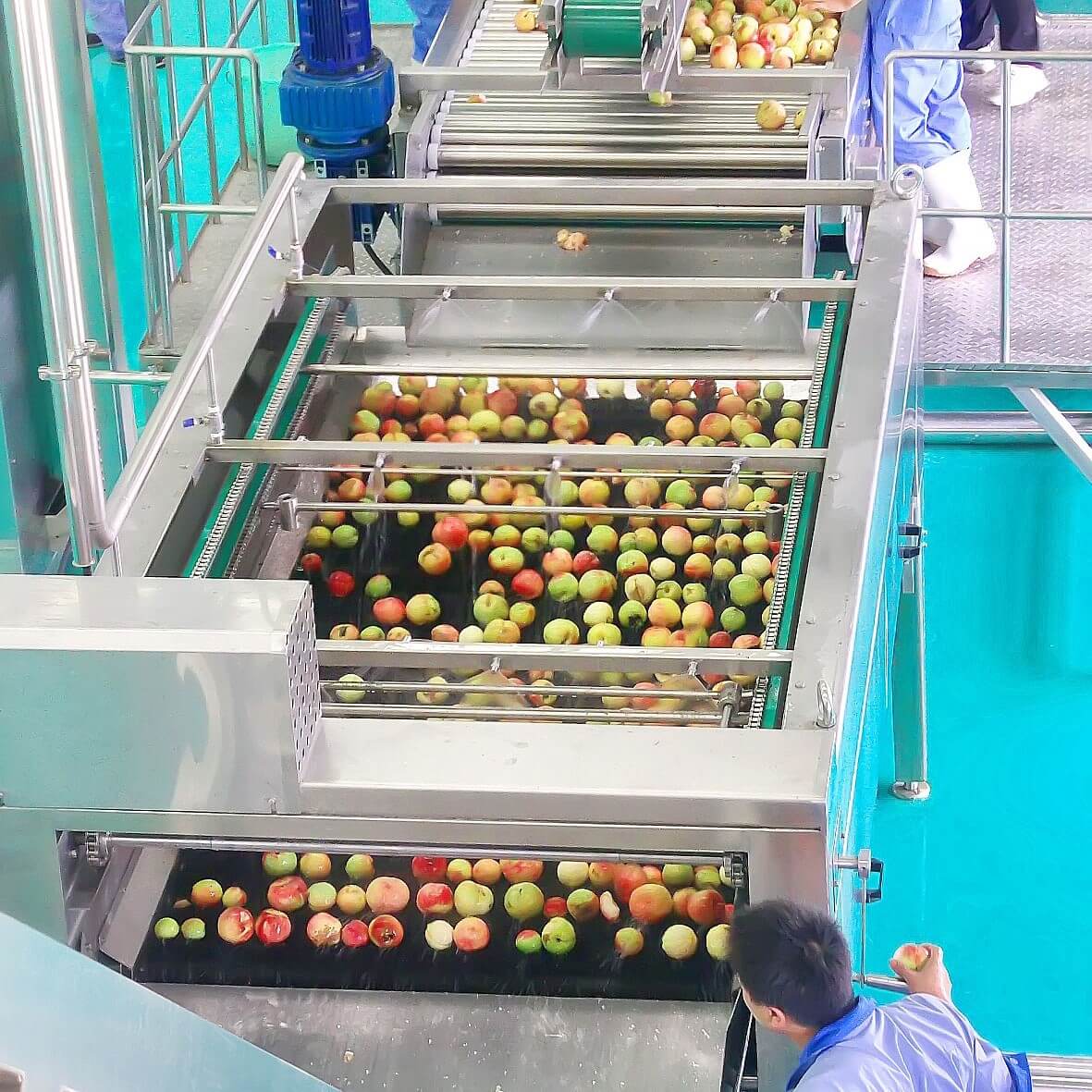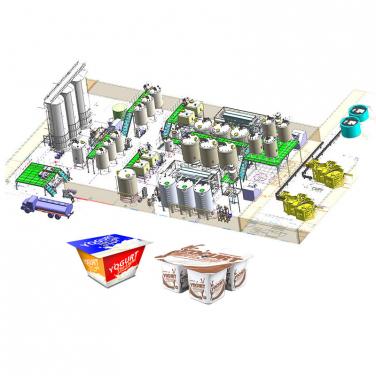The global demand for fresh and nutritious fruit juices has led to significant advancements in juice production technology. Modern juice production lines are designed to efficiently transform raw fruits into high-quality, shelf-stable products. This article provides an in-depth look at the technology and processes involved in juice production, focusing on apple juice and general fruit juice production lines.
Key Components of a Juice Production Line
1. Raw Material Reception and Storage
- Fresh fruits, such as apples, are received and stored in a controlled environment to maintain freshness.
- Fruits are inspected for quality and sorted to remove any damaged or unripe pieces.
2. Washing and Cleaning
- Fruits are thoroughly washed to remove dirt, pesticides, and any foreign particles.
- Automated washing machines use water jets and brushes to ensure the fruits are clean.
3. Crushing and Pulp Extraction
- The cleaned fruits are crushed to extract the juice. For apples, this often involves a combination of grinding and pressing.
- The extracted pulp is then separated from the juice using centrifugal separators or filters.
4. Clarification and Filtration
- The juice is clarified to remove any remaining solid particles and improve its clarity.
- Advanced filtration systems, such as membrane filters, are used to ensure the juice is free from impurities.
5. Pasteurization
- To ensure safety and extend shelf life, the juice is pasteurized. This involves heating the juice to a specific temperature for a set period to kill harmful bacteria.
- Pasteurization methods include high-temperature short-time (HTST) and ultra-high temperature (UHT) processes.
6. Cooling and Packaging
- After pasteurization, the juice is rapidly cooled to maintain its quality and freshness.
- The final product is packaged in various formats, such as PET bottles, glass bottles, Tetra Paks, or stand-up pouches.

Apple Juice Production Line
1. Preparation of Apples
- Apples are washed, sorted, and crushed to extract the juice.
- The crushed apples are pressed to release the juice, which is then collected in tanks.
2. Clarification and Filtration
- The apple juice is clarified using centrifugal separators to remove any solid particles.
- The clarified juice is then filtered through membrane filters to ensure it is clear and free from impurities.
3. Pasteurization
- The apple juice is pasteurized using HTST or UHT methods to ensure it is safe for consumption.
- Pasteurization also helps to preserve the natural flavor and nutritional content of the juice.
4. Cooling and Packaging
- The pasteurized apple juice is cooled quickly to maintain its quality.
- The juice is then packaged into bottles, cartons, or pouches and stored in a cool, dark place until ready for distribution.
Fruit Juice Production Line
1. Raw Fruit Processing
- Various fruits, such as oranges, pineapples, and mangoes, are processed to extract their juice.
- Each fruit requires specific handling and processing techniques to maximize juice yield and quality.
2. Juice Extraction
- The fruits are crushed and pressed to extract the juice. The method varies depending on the type of fruit.
- The extracted juice is collected and stored in tanks for further processing.
3. Clarification and Filtration
- The juice is clarified and filtered to remove any solid particles and impurities.
- Advanced filtration systems ensure the juice is clear and has a consistent texture.
4. Pasteurization
- The fruit juice is pasteurized to eliminate harmful bacteria and extend its shelf life.
- Pasteurization methods include HTST and UHT, depending on the desired shelf life and product characteristics.
5. Cooling and Packaging
- The pasteurized fruit juice is cooled quickly to maintain its qualit Cooling and Packaging
The pasteurized fruit juice is cooled quickly to maintain its quality and freshness.
The final product is packaged in various formats, such as PET bottles, glass bottles, Tetra Paks, or stand-up pouches.

Conclusion
Modern juice production lines integrate advanced technology to ensure high efficiency, product quality, and safety. Whether producing apple juice or a variety of fruit juices, these lines are designed to meet the growing demand for fresh and nutritious beverages. By leveraging advanced technology and stringent quality control measures, juice production plants can efficiently produce high-quality products that meet global standards.






